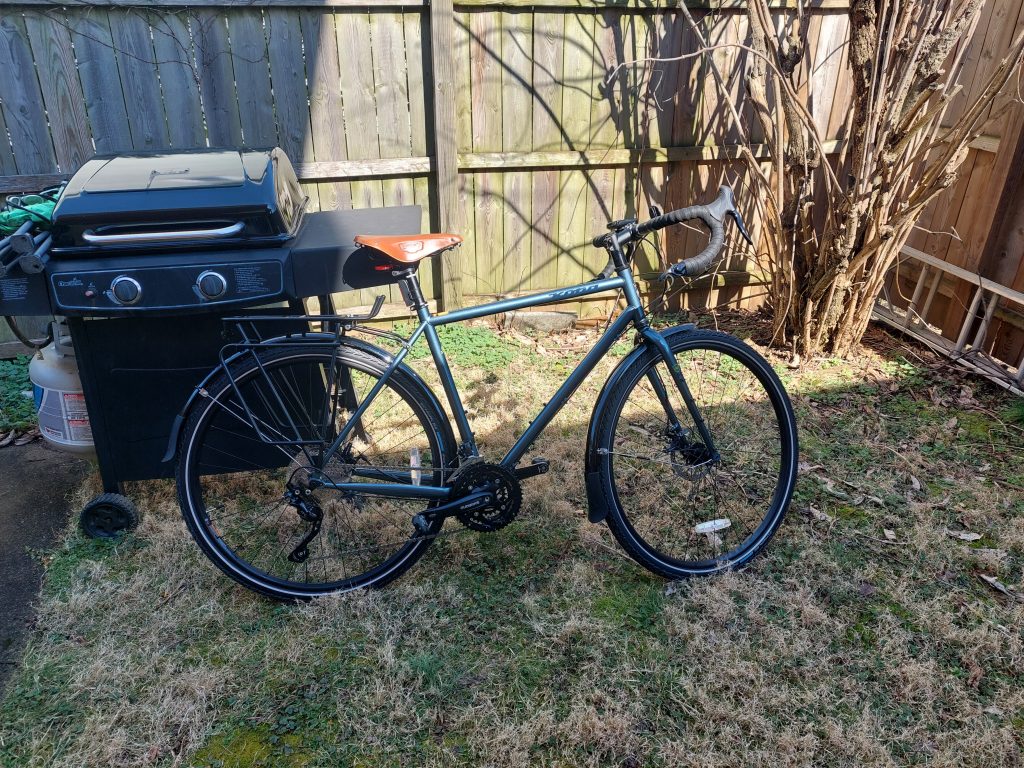I’m sitting in the dining room, watching the snow come down — big fat flakes and a lot of them too. Usually big flakes mean the end of the storm, but it’s been dumping like this for hours now; grass is covered but the snow really isn’t sticking, it’s just a bit too warm. Still, things are sloppy out there, and the roads are slick.
The falling snow and the cloudy winter light are beautiful, I can watch this all afternoon. It’s funny, the wind must be swirling just a little bit: in the backyard the snow falls just slightly to the left, in the middle distance it’s leaning to the right, and across the street it’s falling to the left again. Oops – now it’s all falling straight down. I think I’ll keep my eye on it for a little longer…
Tech Talk
A friend once told a story of how her daughter, in sixth grade or so at the time, had a homework assignment, doing some research and presenting it using PowerPoint, after which she obsessively made a whole bunch of PowerPoint presentations. It was a cute story and worth a chuckle, but the truth is I know exactly how she felt — I am constantly looking for, and constantly finding, new software for creating and presenting things, and then trying to find something to say using it.
I suppose my maps fall into that category, and so does that Jaspersoft report-writing software for database reports. It’s almost laughable how I try to shoehorn maps and databases and reports into things… My latest obsessions these days are notebooks: Jupyter notebook and especially R markdown.
To be fair, I do have a use case for these: I’ve been looking at PennDOT’s crash data for 2021, at the behest of a friend who was interested in extracting information about pedestrian crashes. (The data from PennDOT is pretty convoluted: it comes in multiple, cross-referenced, spreadsheet-like CSV files, and it’s really meant to be used in a database.) I put this data into a QGIS project as well as into Postgres and extracted some of what my friend was looking for, then realized I could do better by running the results through R, which is built for statistics and has a lot of really cool graphing/charting capabilities.
That worked pretty nicely, but I then realized that I should probably document my workflow, and my data sources (I’d tossed in some population and road data, and I was on the verge of losing track of what came from where), and I should also put the results into some narrative form.
Enter notebooks. I’d heard a lot about Jupyter Notebooks and gave it a try, but in the end I settled on R markdown for my documentation. It’s pretty easy to use and produces some good-looking results — and my little project now looks like an over-ambitious high school lab report…
As usual, with success came escalation, but I’m having fun.
